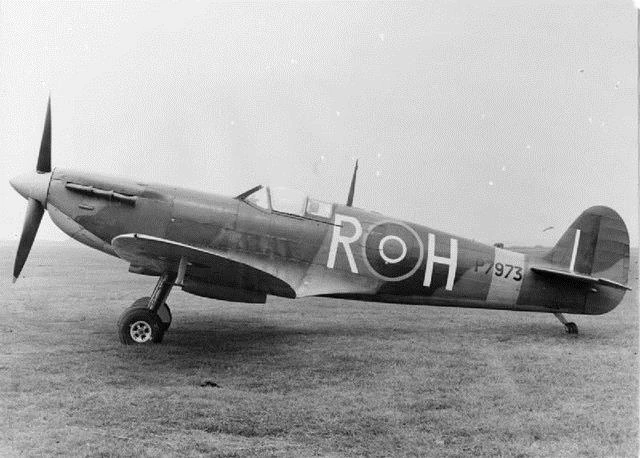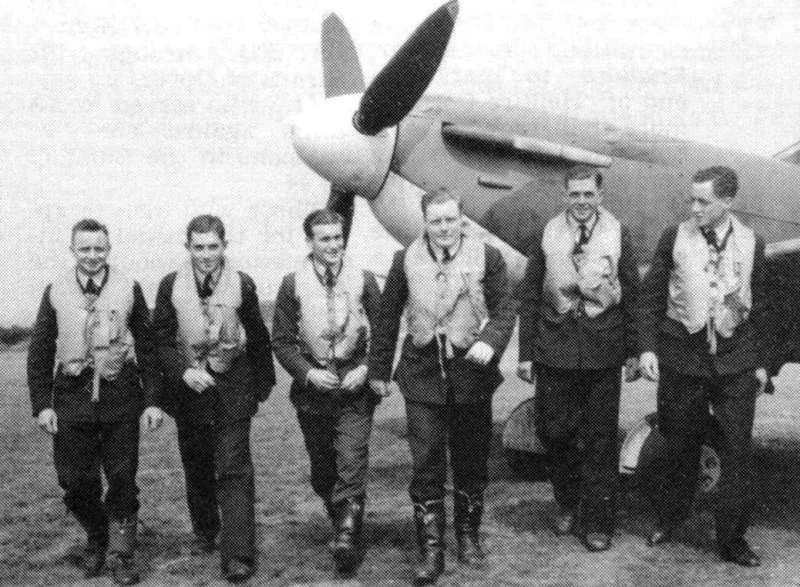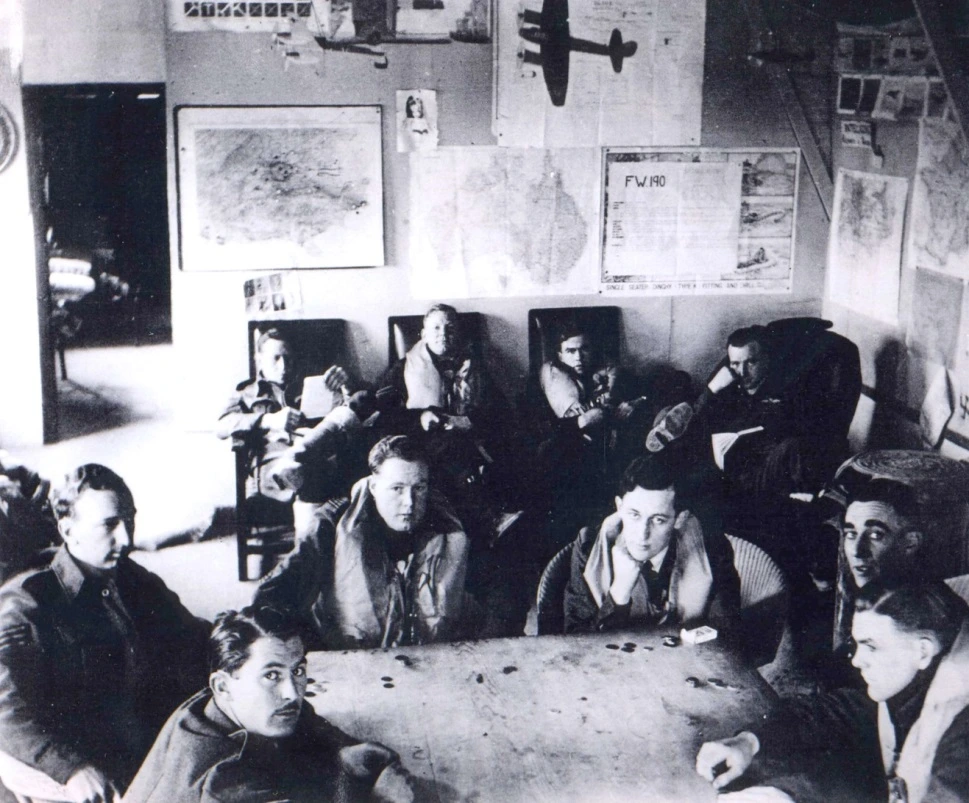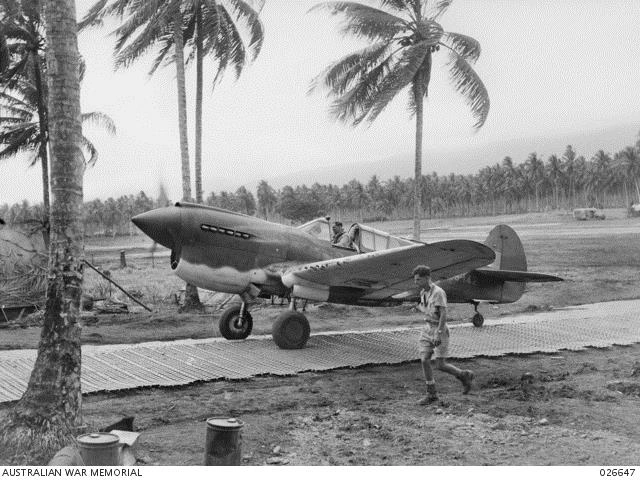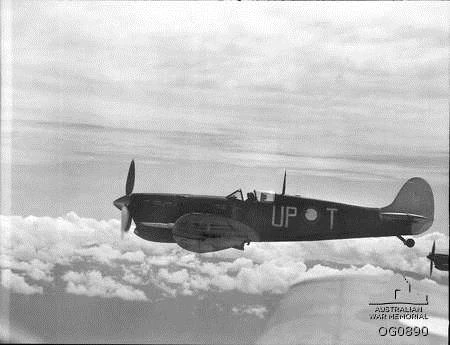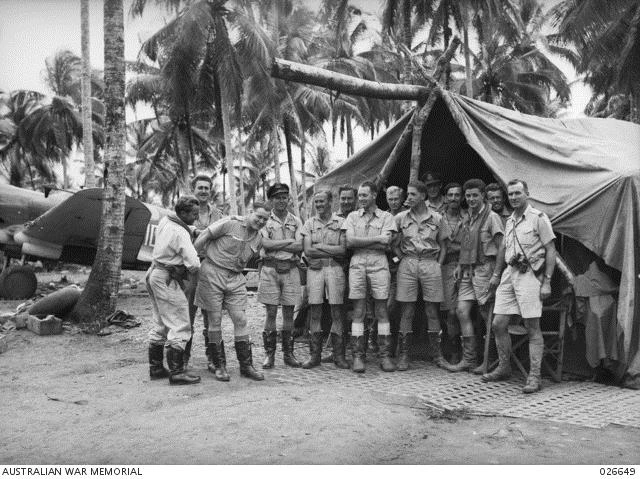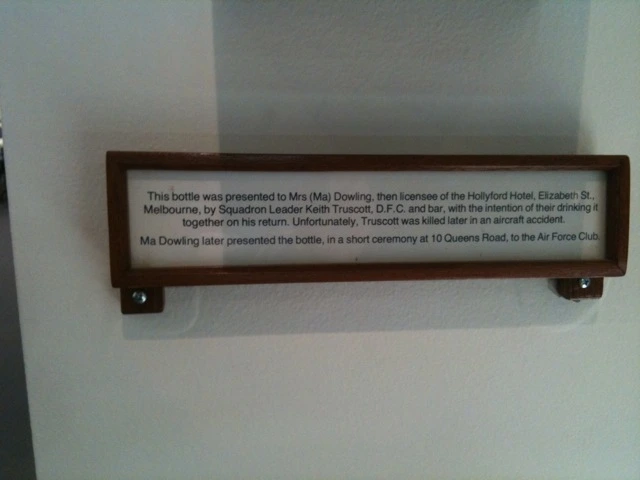SQNLDR Keith William Truscott 400213
DFC + Bar
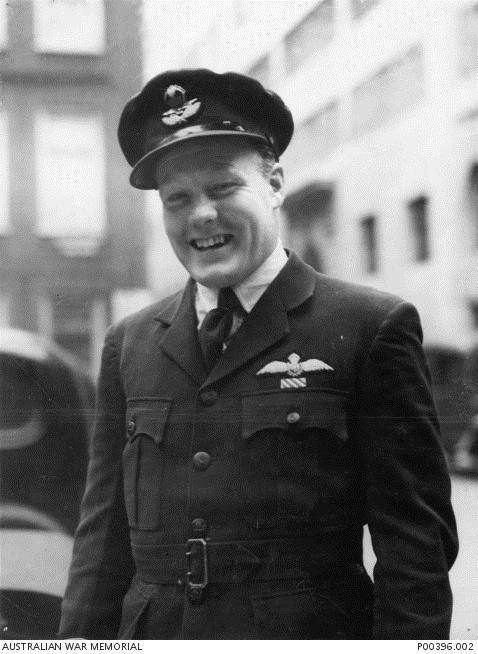


| Squadron/s | 76 SQN 452 SQN |
| Rank On Discharge/Death | Squadron Leader (SQNLDR) |
| Nickname | Bluey |
| Mustering / Specialisation | Pilot |
| Date of Birth | 17 May 1916 |
| Date of Enlistment | 21 Jul 1940 |
| Date of Death | 28 Mar 1943 |
| Contributing Author/s | Compiled by Vince Conant May 2014 The Spitfire Association |
Keith "Bluey" Truscott was probably the best known RAAF pilot killed in the war. He was a well-known Melbourne footballer when he joined the RAAF in 1940, who became a fighter pilot and established his reputation as an Ace in Britain. Born on the 17th of May 1916 at Prahran, Melbourne, he proved to be both a good student and keen sportsman, playing Australian Rules for the Melbourne Football Club's premiership team in 1939. A popular sporting figure Keith left his job as an accountant in 1940 to join the RAAF. He was not a natural pilot and almost failed his course. His position as something of a public figure afforded Truscott a chance to continue flying and he eventually earned his wings despite becoming known for his poor landings.
He trained as a pilot in Canada under the Empire Air Training Scheme and commissioned in February 1941 went to England in 1941 as a foundation member of No. 452 Squadron RAAF, which between August and November was the top-scoring fighter squadron in Britain.
Keith soon established his personal reputation, destroying up to 16 enemy aircraft; he was twice awarded the Distinguished Flying Cross. He was never regarded as a great flyer, but he was aggressive and accurate with his shooting. Stories of his exploits, most of them over German-occupied France, were read widely in Australia and he became a national hero. In 1942 he was posted back to Australia, where fans forgave him for his loss of form and playing skill when he took part in a special return football game.
In Australia, Keith joined No. 76 Squadron in Bankstown. Moving from his favourite aircraft, the Spitfire, Truscott now flew P-40 Kittyhawks . The squadron had previously served in Papua and, including "Bluey", redeployed there in July 1942. Before leaving Australia, he played a last game for the Melbourne Football Club, but lacking match fitness, was unable to keep up with the play and found himself exhausted. He had received a rousing public welcome and kicked a goal, much to the fans' delight, but when he was asked whether he would play again, he replied that it was no longer for him.
It was, he said, "too dangerous."
In mid-1943 he took part in the desperate fighting, in appalling conditions, at Milne Bay, in Papua, and was promoted to command the squadron, the previous leader having been killed in action. Keith evacuated his aircraft to Port Moresby amidst uncertainty about whether the airfields at Milne Bay could be held. His squadron served throughout the Milne Bay battle in constant rain, heavy mist, and low clouds. The mountainous terrain, slippery runways, and heavy anti-aircraft fire added to the danger but he survived and continued to command the squadron when it was transferred to Darwin.
Keith and his pilots had a vital part in the local defeat of the Japanese. Later, in January 1943, in the defence of Darwin he shot down an enemy bomber. His tally rose to 16 enemy aircraft destroyed along with three probables and three damaged. In February 1943 the squadron moved to a quieter posting in Western Australia. "Bluey" was on a training flight over the Exmouth Gulf off the Western Australia coastline on the 28th of March when he made a mock attack on a low-flying Catalina whilst flying a Kittyhawk fighter. Misjudging his height over the glassy water, he crashed into the sea and was killed.
Bluey and Wing Commander Robert Bungey DFC:
After fighting their way out of France into the channel Bluey Truscott was shot down; landing in the sea safely. He got into his dingy, Bob circled above Bluey with his transmitter on so that the Sea-Rescue boys could get a bearing on him and affect a rescue. Later when Bluey Truscott got back to the squadron he sought Bob out to thank him for saving his life. Also on the same engagement, Bob helped the late David Downs get back to Manston as he was very low on fuel and he said to me that he certainly would not have made it back on that day only for the help that Bob had given him.
The squadron finished the war as part of the Australian First Tactical Air Force, based in the Dutch East Indies.
Keith "Bluey" Truscott was the RAAF's second-highest-scoring ace of the Second World War after Clive "Killer" Caldwell, and each year the Melbourne Football Club remembers him when it awards the Keith "Bluey" Truscott Medal for the best and fairest player.
Also the Truscott Club Located on Payne Street was named after Squadron Leader "Bluey" Truscott, RAAF due to his commanding of the Fighter Squadron responsible for the defence of Exmouth Gulf (Operation Potshot) during the War.
KEITH TRUSCOTT
SPORTSMAN – FIGHTER PILOT – LEADER OF MEN
VALE!
Credit:
Shire of Exemouth Web - www.exmouth.wa.gov.au
Slackbastard.anarchobase.com
En.Wikipedia.org
Diggerhistory.info/pages-heroes - ADF Serials

